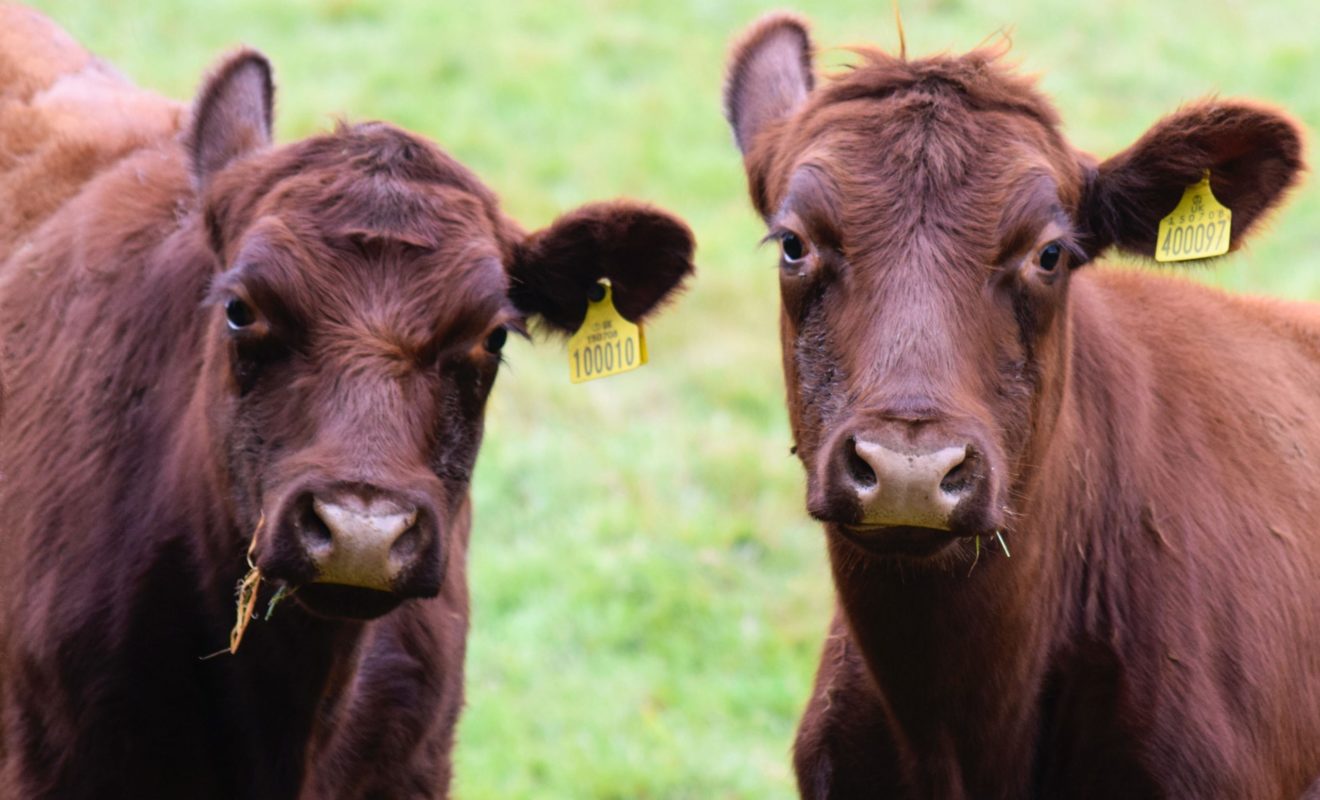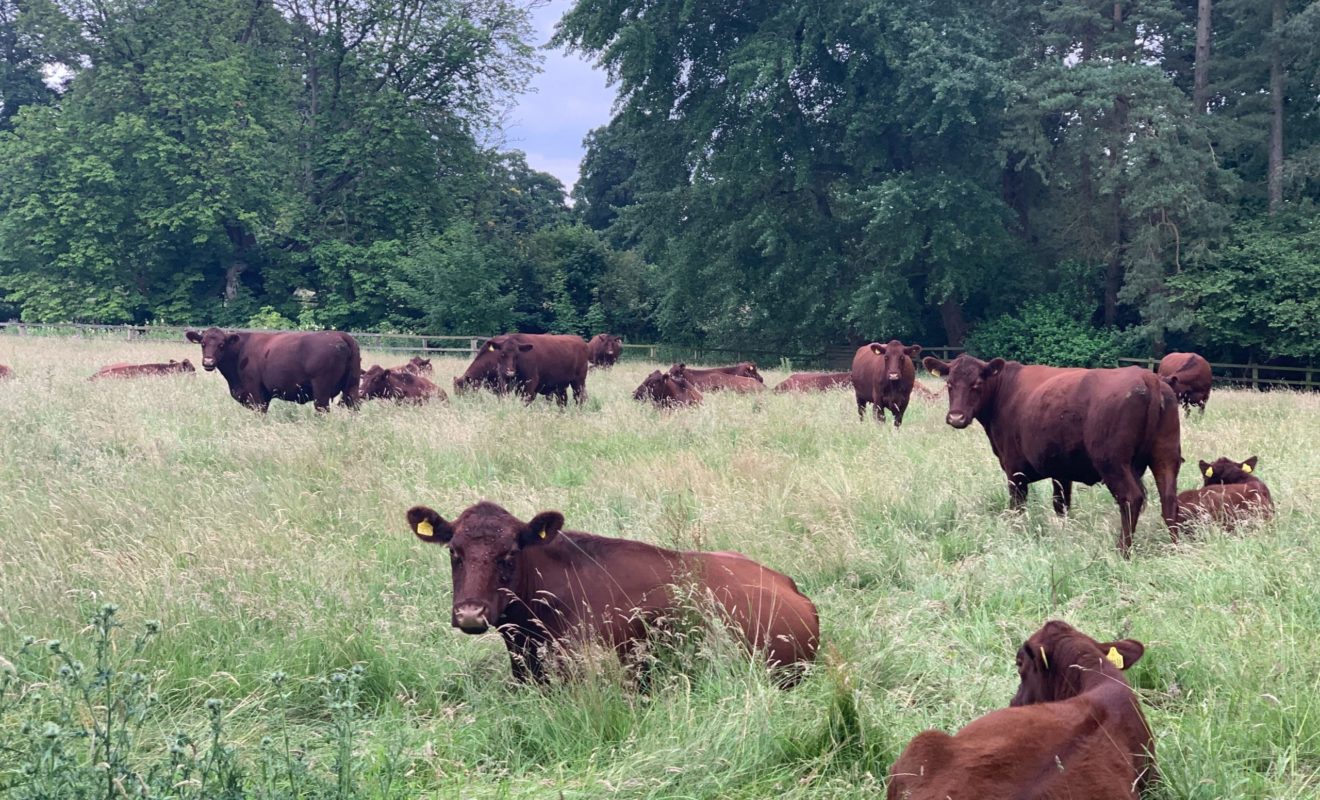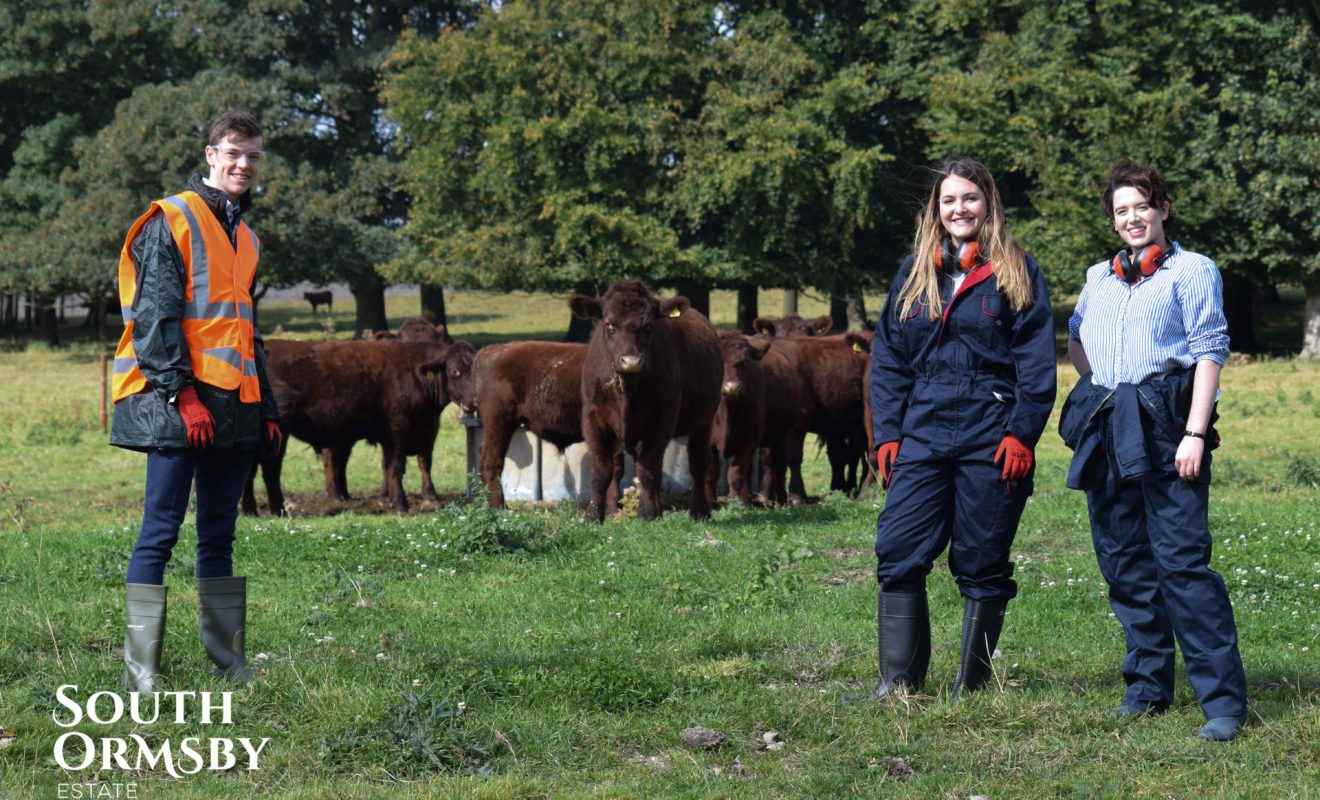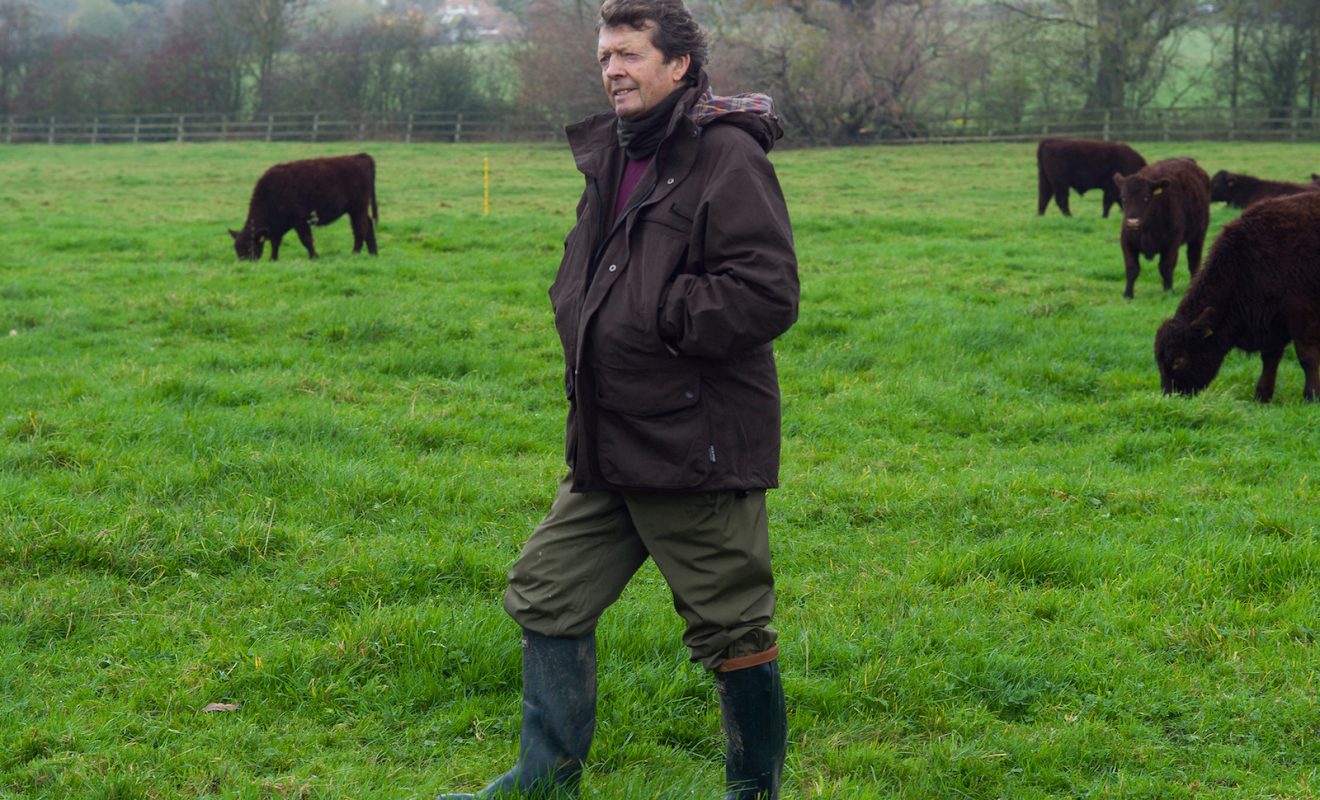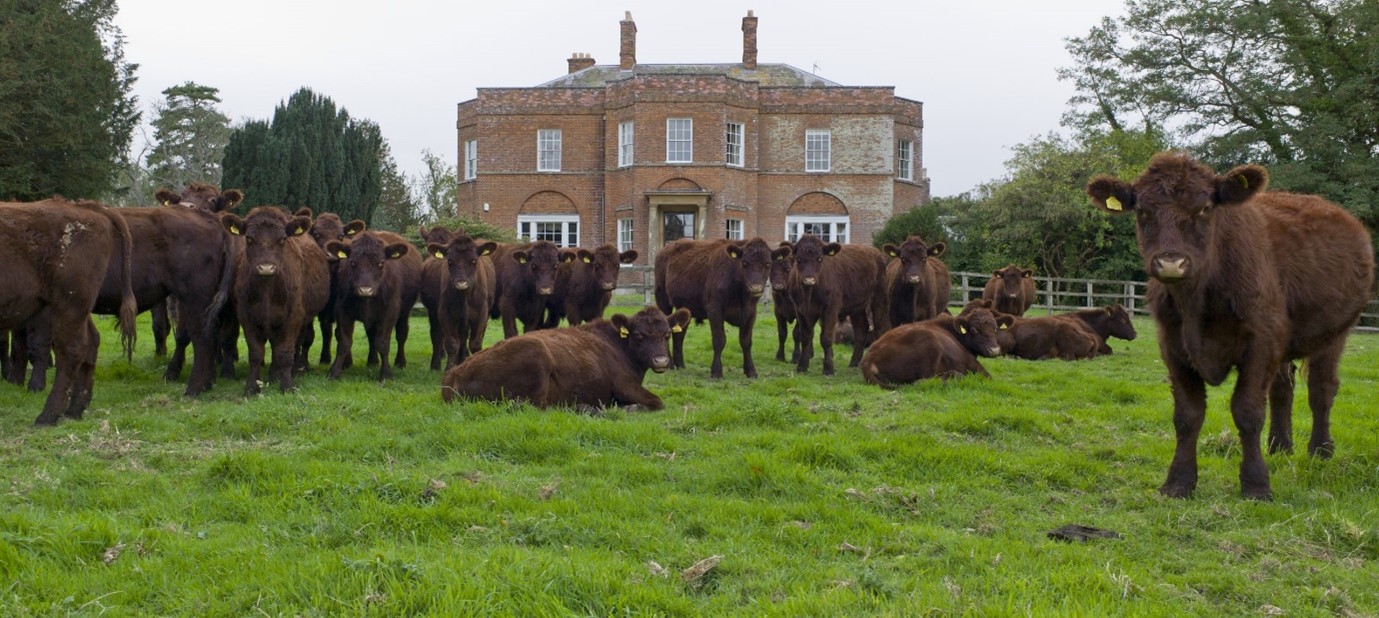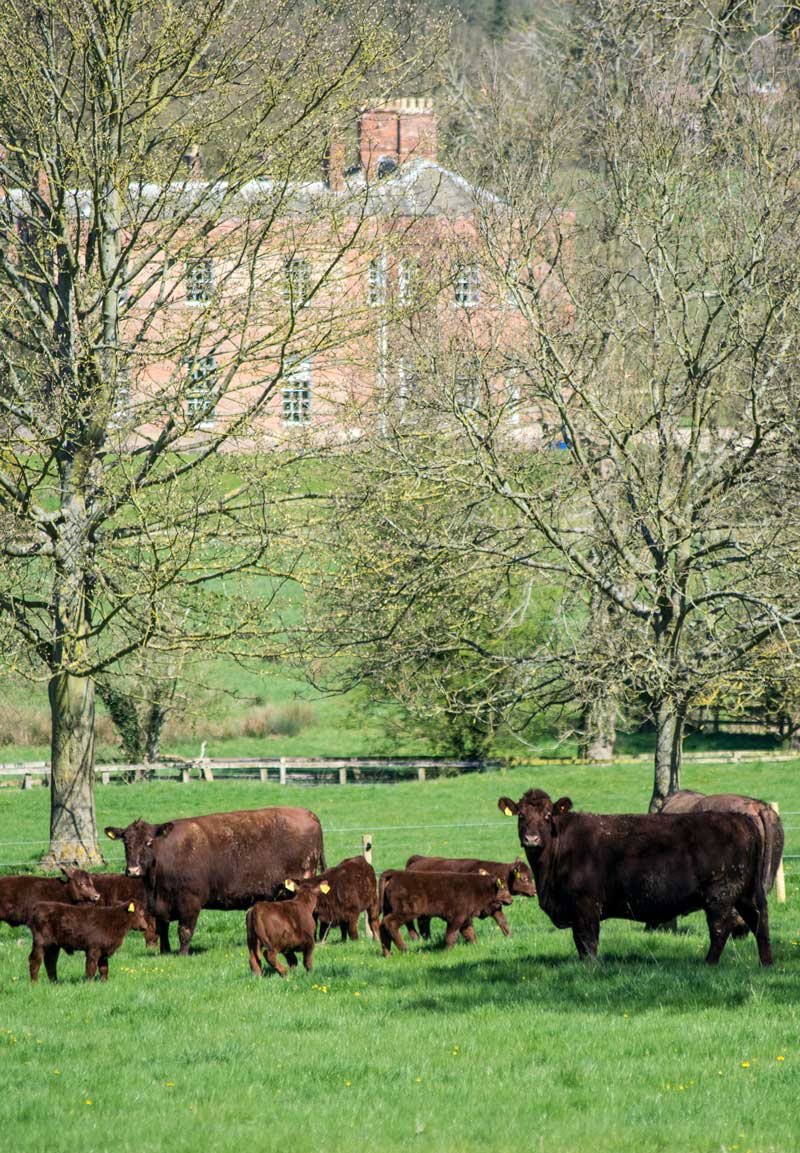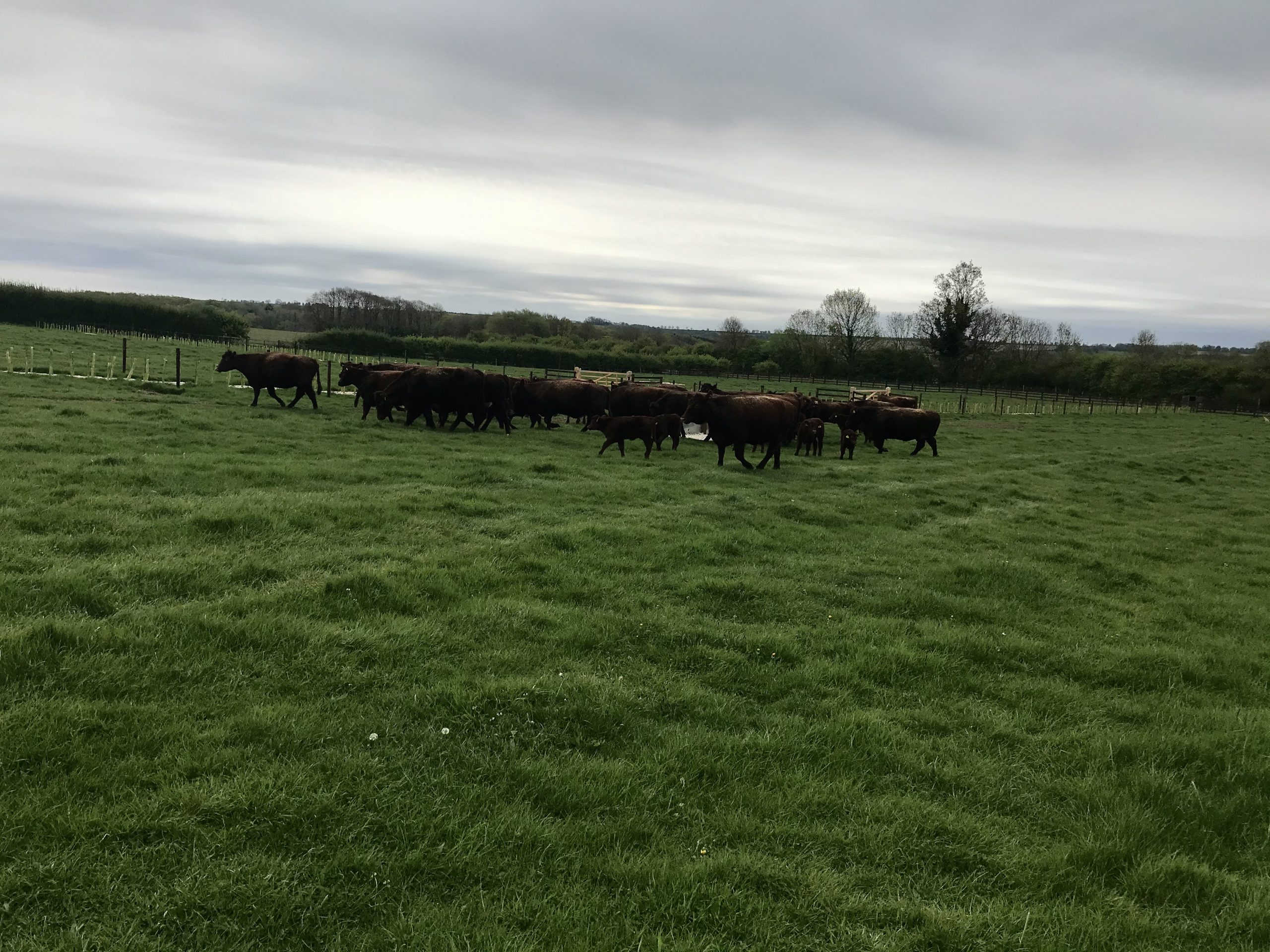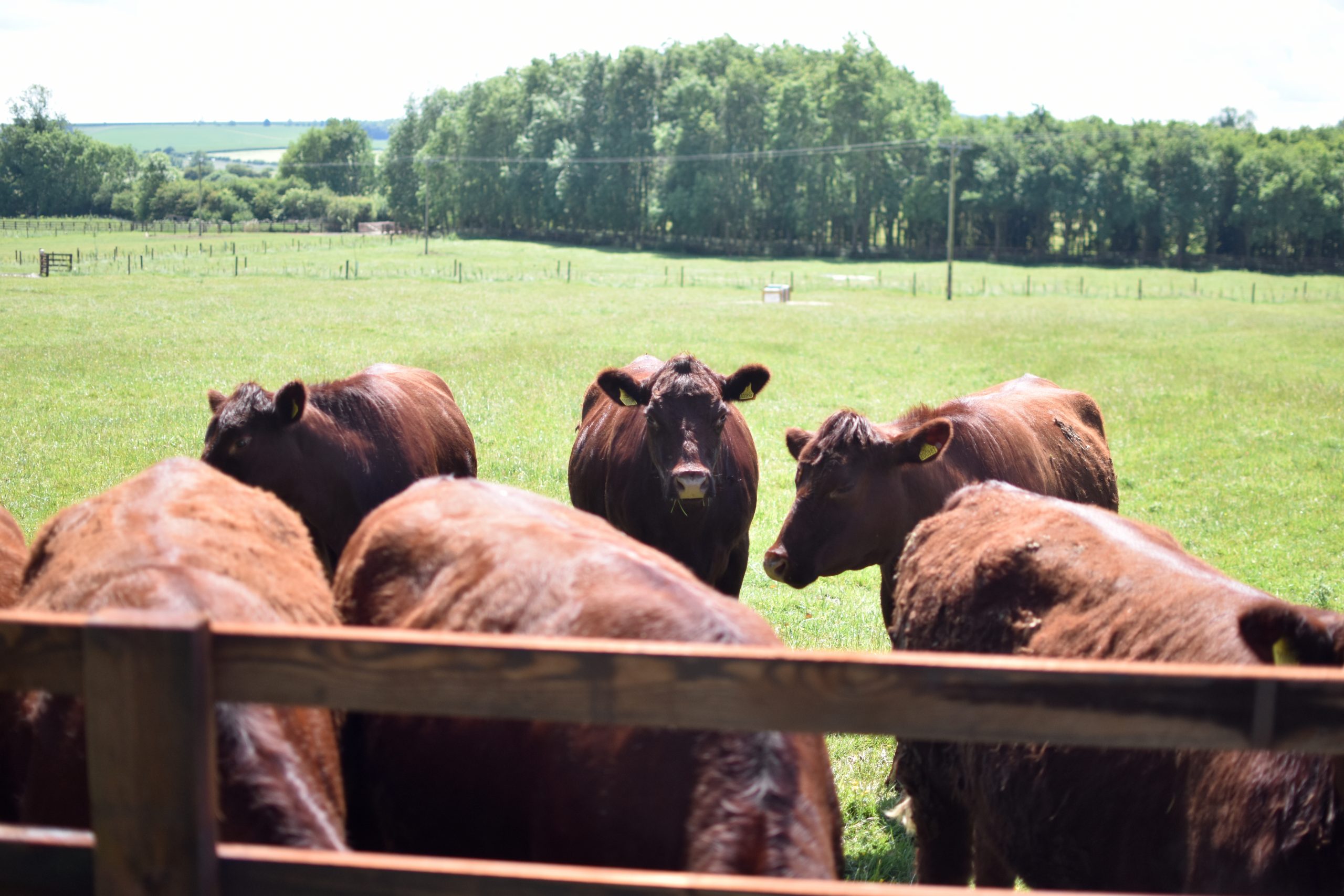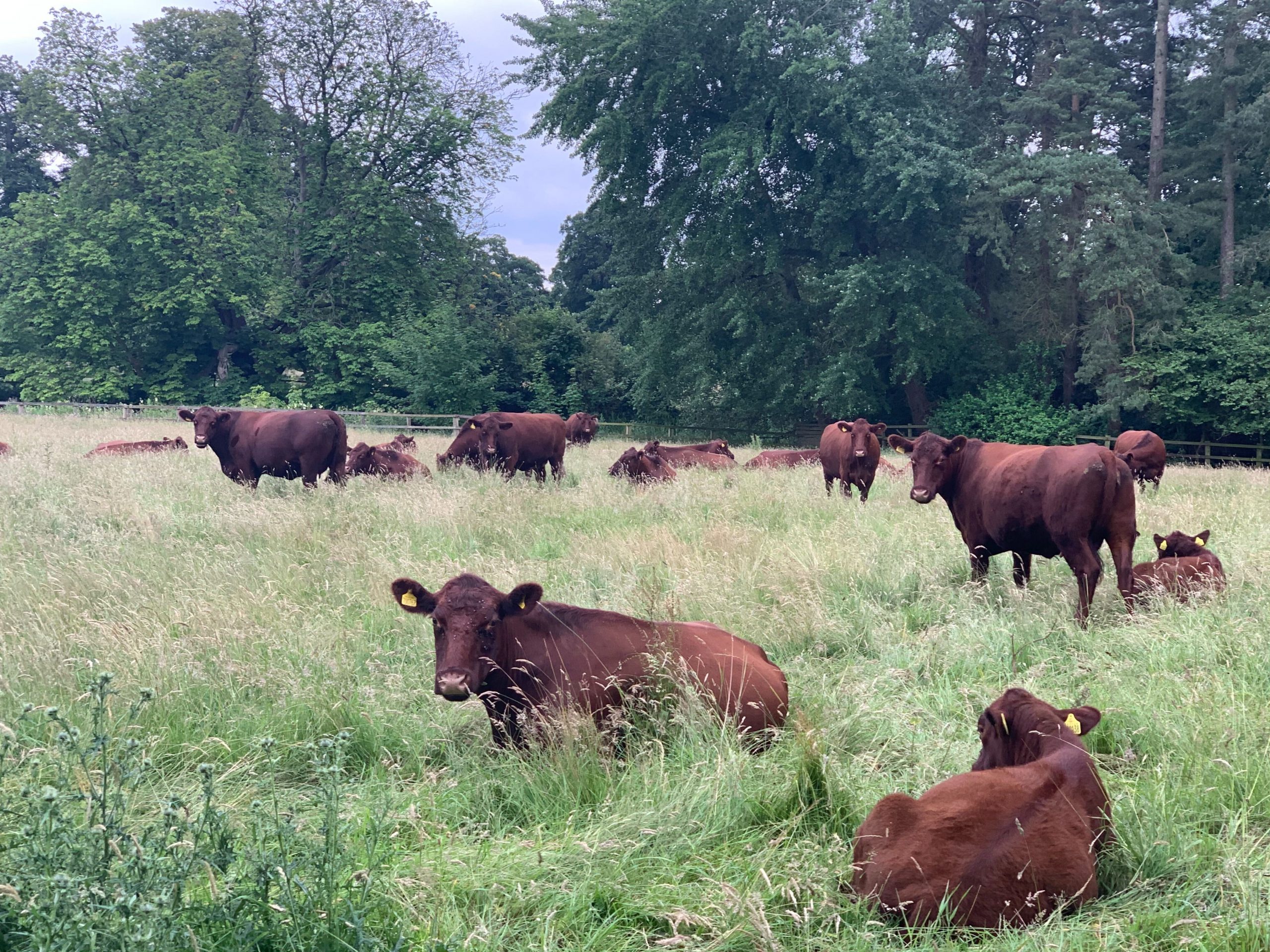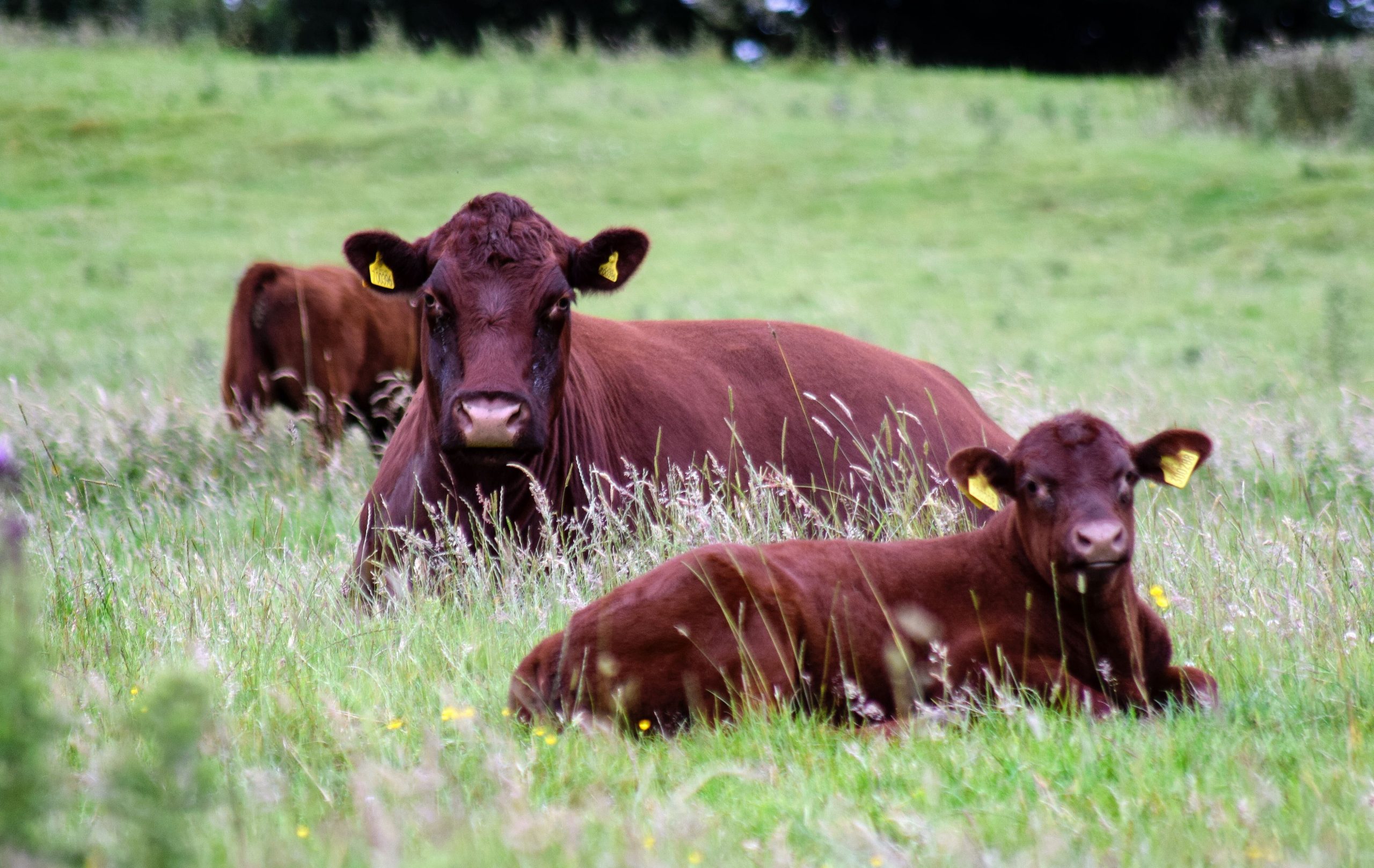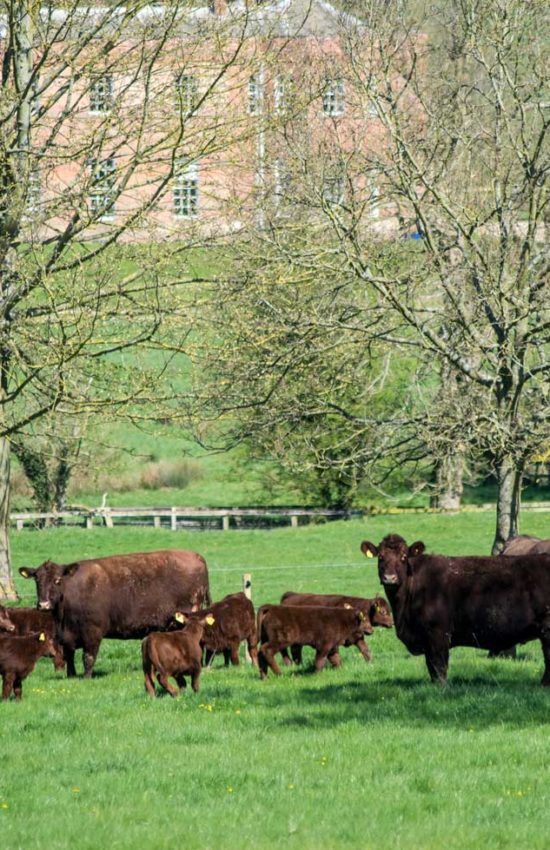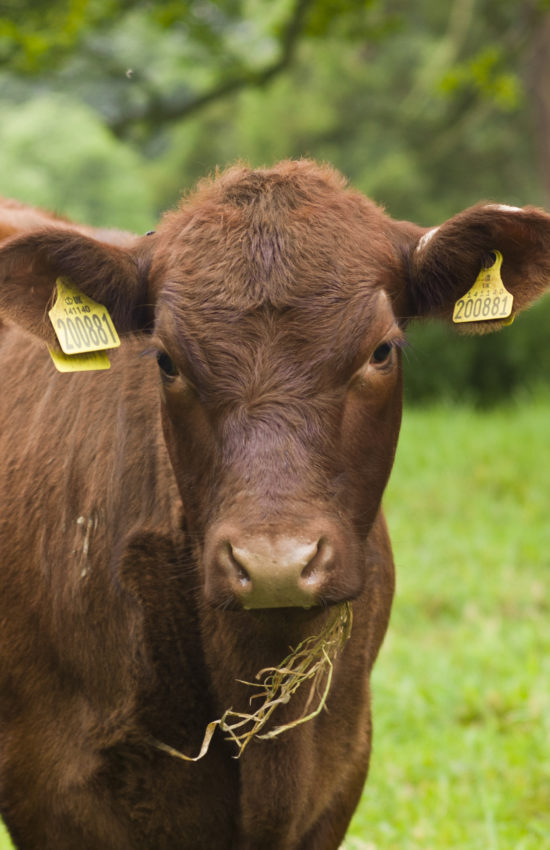John Crutchley has been working with cattle since he was a boy, from dairy herds to beef, and has always had a fondness for Lincoln Red Cattle. He has looked after South Ormsby Estate’s herd of Lincoln Red’s since the millennium and has overseen their move onto the estate and their growth since then. He is passionate about raising his cattle to the highest possible standard and loves them for their great temperament and gentle nature.
How did you come to farming? Have you always worked with Cattle?
I was born on my Grandfather’s farm and have been with farming since birth.
Since I began, I have always worked with cattle – both dairy and beef production, as well as with arable producing feed for cattle.
Is there anything that drew you to Lincoln Red Cattle specifically? What are your favourite aspects of the breed?
When I was a boy, I spent a good deal of my childhood on my Grandparent’s farm. All farms had a house cow or two, which were milked by hand – this was my job from the age of seven. Our cows were Lincoln Reds. Lincoln Red cattle are fantastic for their gentle nature, and their ease of handling – while some can be stubborn, it is very rare to find one that has a bad attitude, which makes them very kind cattle.
How have you found raising the herd on South Ormsby Estate? (As the herd was moved to the estate 3 years ago)
Moving the herd from their previous home to South Ormsby Estate came with some difficulties. As we got settled onto the estate, winter housing for the cattle was not initially available, and the herd was moved gradually, as sufficient grazing land became available.
As happens when moving a large herd, there were some health instances – their immune systems were not resistant to any illnesses they could pick up from the new grazing land, but this has now been solved, and their health is in a very good position.
It took 18 months to fully adjust, and now all cattle are grazing on the estate, and new buildings are in place. It is considerably better now – the cattle are very happy now, and comfortable on the estate.
What are your goals with the herd over the coming years? Are there any changes you are hoping to make?
We have quite a few goals for the herd – we will soon be starting a scheme for milking the cows, leaving their calves at foot whilst this is done. They will be milked once a day, and we will be making their milk into cheese, which is sure to be delicious. Once our dairy scheme established, we hope to increase to milking 200 of our cows a day.
Another of our goals is to continue to grow our herd. The herd currently number in the early 400’s, and our goal is to reach 700, with the milk cows included.
I am also excited about transitioning to a regenerative approach to grazing the cattle. Looking at the way we are utilising our grass, and how we can make more of it, which will also allow us to keep the herd out in the pastures for longer.
Do you have any favourite cattle within the herd? What would you say makes Lincoln Red’s an ideal breed?
While I may have a few favourites, I do try not to due to the nature of cattle farming – when you have cattle for 13 years, who have given you good service and are a pleasure to have, it is much better to not have favourites.
Lincoln Red’s are an excellent breed for many reasons- they are a strong foraging animal, which is important above all else. Their general temperament is very good, and both the meat and milk are delicious.
What are your favourite parts of working with the cattle? Are there any events throughout the year that you look forward to where they are concerned?
One of the favourite dates in the calendar is when we come to Pregnancy Diagnose the cattle – when you have a good take and have 96% of those tested successful, it is incredibly encouraging. For several years now we have achieved this, along with a 93% calving rate.
The calving itself is a very special time, a time for new life and expanding the herd, which is fantastic to see.
The real highlight of every year is when the cattle – especially the calves – are turned out from their winter housing onto pasture. For the calves, it is the first time they have experience grass, and they will jump, skip, and play for several hours, which is really something to see.


